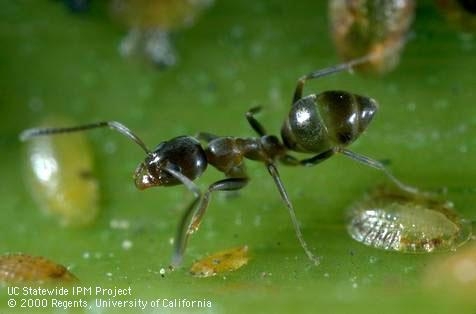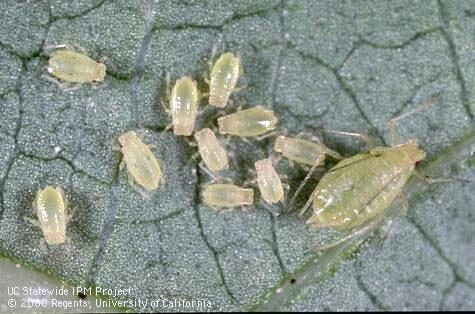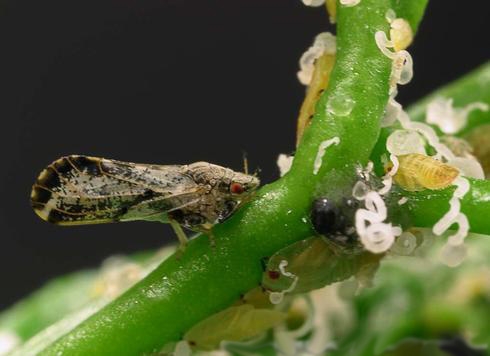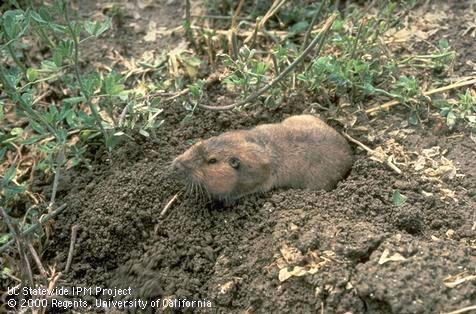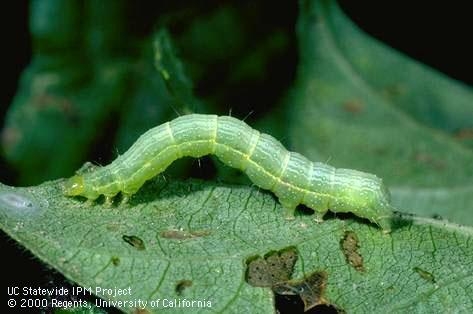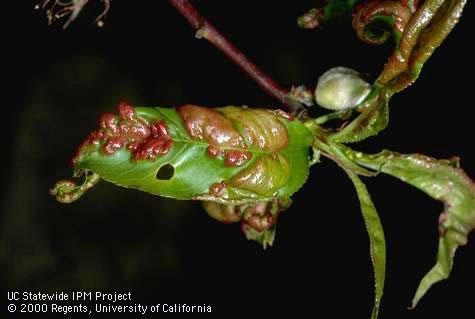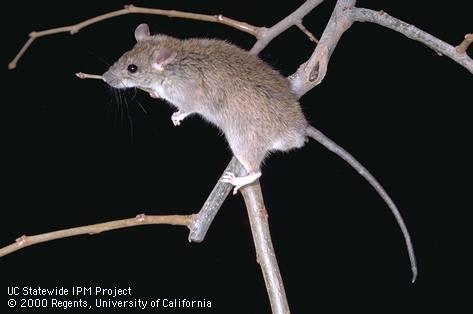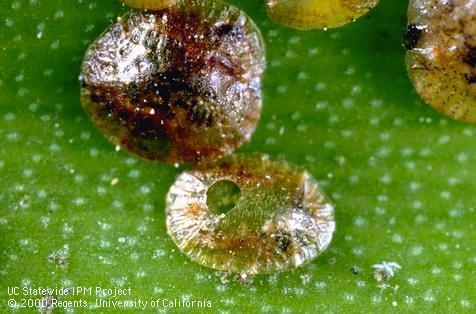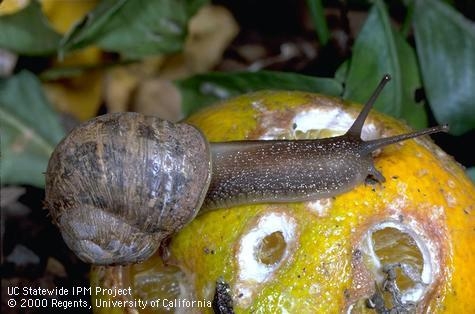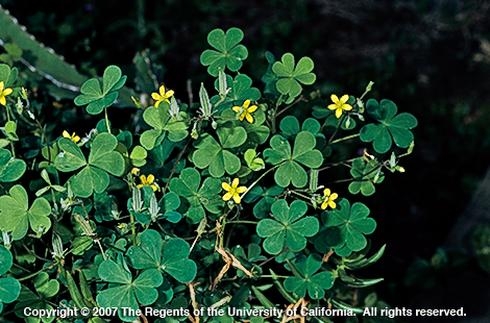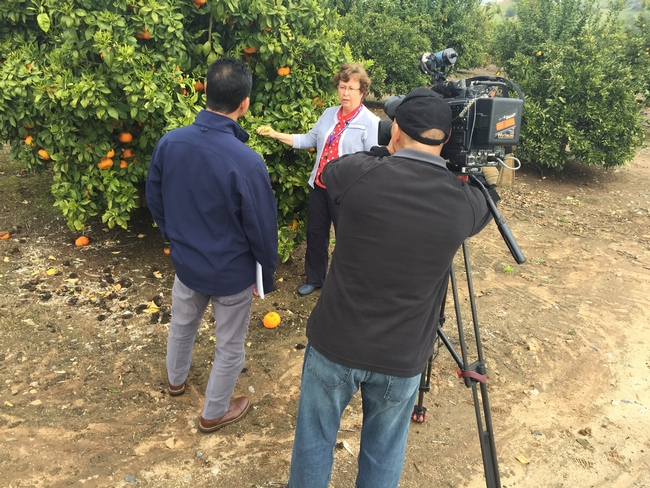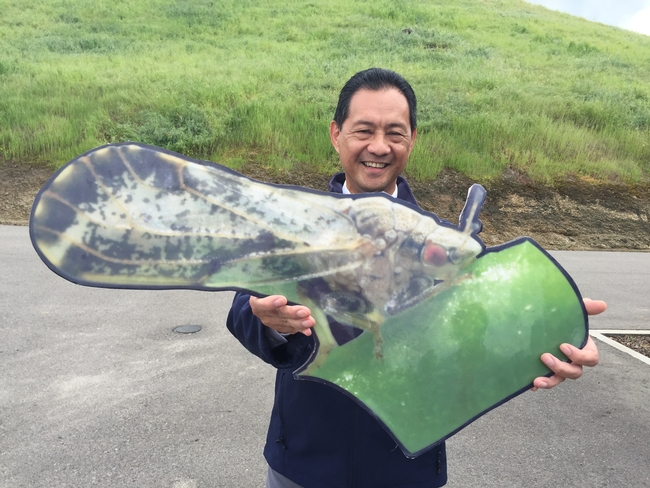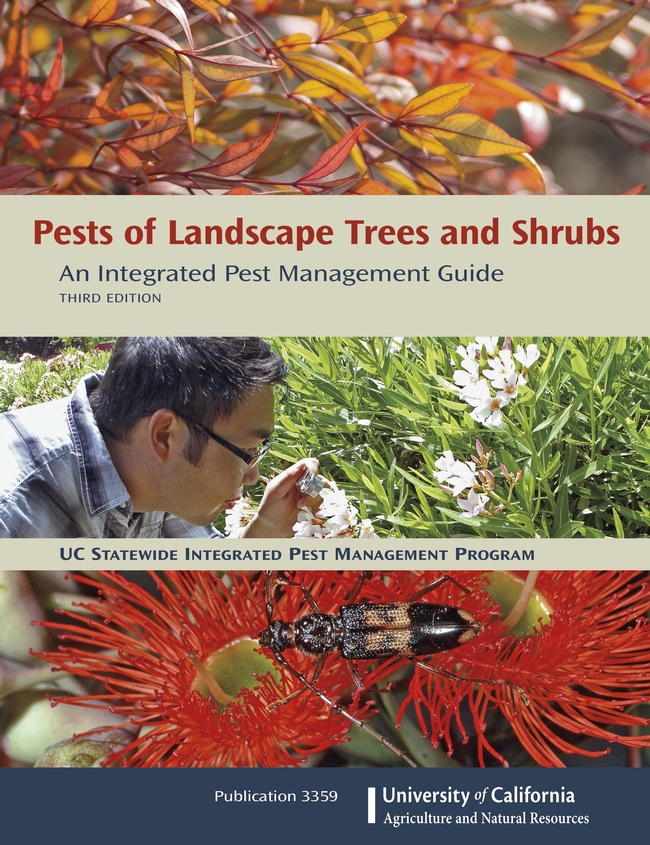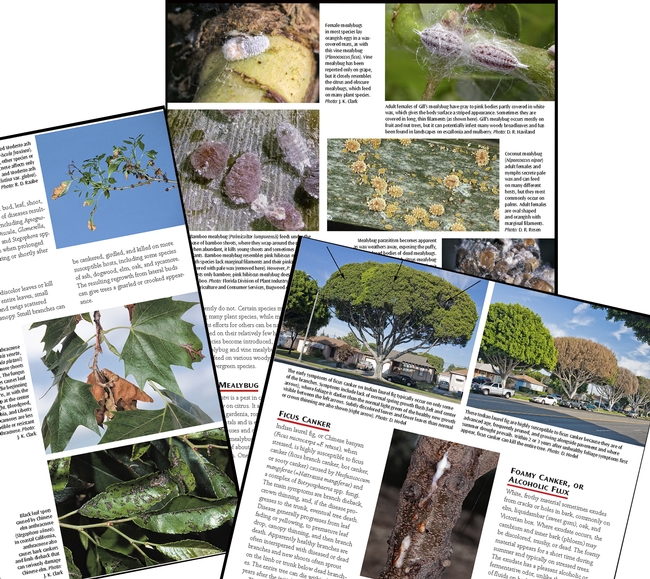Posts Tagged: citrus
Top 10 pests in gardens and landscapes and how to control them
Download the free booklet at the bottom of the page!
1. Ants
Most people deal with ants around their home at some point. Because most ants live outdoors, focus efforts on keeping ants from entering buildings by caulking entryways. Follow good sanitation practices to make your home less attractive to ants. Spraying ants inside the home will not prevent more ants from entering. Use baits to control the ant colony. Pesticide baits work by attracting worker ants who then take the poison back to the nest where the entire colony, including queens, can be killed. In the landscape, ants protect honeydew-producing pest insects from predators, so use sticky barriers or insecticide baits to keep ants out of trees and shrubs.
- Find out more at http://www.ipm.ucanr.edu/QT/antscard.html
2. Aphids
Aphids can curl leaves and produce sticky honeydew, but they rarely kill plants and you usually can wash them off with water. When aphid numbers get high, natural enemies such as lady beetles (lady bugs), lacewings, syrphid fly larvae, soldier beetles and others frequently feed on them, eliminating the need for pesticides. Protect these good bugs by avoiding the use of insecticides that can be toxic to a broad variety of insects. Ants protect aphids from these natural enemies, so keep ants away from your garden as well. When pesticides are necessary, use less toxic products such as insecticidal soaps and oils.
- Learn more about controlling aphids here: http://www.ipm.ucanr.edu/QT/aphidscard.html
3. Asian citrus psyllid and Huanglongbing disease
The Asian citrus psyllid (ACP) and the deadly bacterial disease it spreads, Huanglongbing (HLB), threaten citrus trees in backyards and on farms. There is no cure or effective control method for HLB disease. All types of citrus—including oranges, grapefruit, lemons, and mandarins—are affected as well as a few closely related ornamentals. ACP and HLB have already devastated the Florida citrus industry, and now that it is in the Western U.S. it is threatening the California citrus industry as well.
- See where the outbreaks are in California with our helpful Asian citrus psyllid website: http://ucanr.edu/sites/ACP/Distribution_of_ACP_in_California/
- Contact your agricultural commissioner's office, or call the California Department of Food and Agriculture (CDFA) Exotic Pest Hotline at 1-800-491-1899 to confirm a find. Learn more about ACP here: http://www.ipm.ucanr.edu/QT/asiancitruscard.html
4. Gophers
Gophers are small burrowing rodents that feed on roots of many types of plants. A single gopher can ruin a garden in a short time, and gopher gnawing can damage irrigation lines and sprinkler systems. In lawns, their mounds are unsightly and interfere with mowing. Early detection is critical to prevent damage. Use both traps and underground fencing to manage gopher problems. Toxic baits are available but can pose threats to wildlife, pets, and children, especially in backyard situations.
- Learn more about protecting your garden and landscape from gophers here: http://www.ipm.ucanr.edu/QT/gopherscard.html
5. Leaf-feeding caterpillars
Caterpillars, which are the larvae of butterflies and moths, damage plants by chewing on leaves, flowers, shoots, and fruit. Caterpillars in fruit or wood can be difficult to manage because they are hidden most of their life and can cause serious damage even when numbers are low. However, many plants, especially perennials, can tolerate substantial leaf damage, so a few leaf-feeding caterpillars often aren't a concern. Handpicking and beneficial predators and parasites often provide sufficient control. Look for feeding holes, excrement, webbed or rolled leaves, caterpillars, eggs, and good bugs.
- Learn more here:http://www.ipm.ucanr.edu/QT/lfcaterpillarscard.html
6. Peach leaf curl
Peach leaf curl is a fungal disease that affects only peach and nectarine trees. Distorted, reddened foliage in the spring is a distinctive symptom. New leaves and shoots thicken and pucker and later may die and fall off. An infection that continues untreated for several years can lead to a tree's decline. To prevent peach leaf curl, treat peach and nectarine trees with a copper fungicide every year after leaves fall. After symptoms appear in the spring, any treatment will not be effective. When planting new trees, consider buying peach tree varieties that are resistant to the disease.
- To learn more about preventing peach leaf curl click here: http://www.ipm.ucanr.edu/QT/peachleafcurlcard.html
7. Rats
Rats eat and contaminate food, garden produce, and fruit, and transmit diseases to humans and pets. Manage rats by removing food and shelter, eliminating entryways into buildings, and trapping. Snap traps are the safest, most effective, and most economical way to trap rats. For Norway rats, place traps close to walls, behind objects, in dark corners, and in places where you have found rat droppings. For roof rats, place traps in off-the-ground locations such as ledges, shelves, branches, fences, pipes, or overhead beams. Ensure traps are out of reach of children and pets.
- Learn more about preventing and controlling rats here: http://www.ipm.ucanr.edu/QT/ratscard.html
8. Scales
Scale insects suck plant juices and are pests of many trees and shrubs. Infestations can cause yellowing or premature dropping of leaves, sticky honeydew, and blackish sooty mold. Plant parts can distort or die back, depending on the species and abundance of scales. Most plants tolerate low to moderate numbers of scales. Provide plants with proper cultural care, especially irrigation. Encourage scale predators such as lady beetles or lacewings and look for parasite emergence holes in scale covers. Use sticky barriers or insecticide baits to selectively control scale-tending ants. Consider replacing problem-prone plants because most scales are highly specific to certain plants.
- Learn more about controlling scale populations here: http://www.ipm.ucanr.edu/QT/scalescard.html
9. Snails and slugs
These slimy mollusks emerge from hiding at night and chew holes in leaves and flowers of many succulent garden plants and fruit. Management requires a vigilant and integrated approach that includes eliminating moisture and hiding spots, trapping, setting up barriers, and handpicking. Regularly remove snails from shelters you can't eliminate such as low ledges on fences, undersides of decks, and meter boxes. Place traps in your garden and dispose of trapped snails and slugs daily. Reduce moist surfaces by switching to drip irrigation or watering in the morning rather than later in the day. Consider snail-proof plants such as impatiens, geraniums, begonias, lantana, nasturtiums, and many plants with stiff leaves and highly scented foliage such as sage, rosemary, and lavender.
- Learn more about controlling snails and slugs with and without pesticides in your garden here: http://www.ipm.ucanr.edu/QT/snailsslugscard.html
10. Weeds in landscapes
Prevent weed invasions in new beds with good site preparation. Keep weeds out with an integrated program that includes competitive plants, mulches, and hand removal. Be particularly vigilant about removing aggressive perennial weeds. You rarely should need herbicides in established landscape plantings. Mulches prevent weed seed germination by blocking sunlight. Remove small weeds by hand before they flower and set seed. Use shallow cultivation or hoeing to remove annual weeds from ornamental plantings. Only use herbicides for special-problem situations before establishing new plantings or for difficult-to-control perennial weeds.
- Learn more about controlling weeds in your landscape here: http://www.ipm.ucanr.edu/QT/landscapeweedscard.html
To see all of the University of California's Statewide Integrated Pest Management Program's information on home, garden, and landscape pests, visit http://www.ipm.ucanr.edu/PMG/menu.homegarden.html
For other short pest “Quick Tips” like the ten above, see http://www.ipm.ucanr.edu/QT/
To read even more in-depth, peer-reviewed information on many other common home and landscape pests in California, see the Pest Notes series at http://www.ipm.ucanr.edu/PMG/PESTNOTES/index.html
Download your free UC IPM Quick Tips Booklet of the Top Ten Pests in Gardens and Landscapes and How to Control Them with the link below!
Citrus trees sprayed for Asian citrus psyllid in Highland
Backyard citrus trees in Highland, Calif., were sprayed with a pesticide to kill Asian citrus psyllids, reported Jim Steinberg in the San Bernardino Sun. The invasive pests pose a threat because they can carry huanglongbing disease, which is incurable. The California Department of Food and Agriculture is treating trees that have ACP to keep the pest number in California low.
“What they are really doing is buying time until disease resistant trees become available, or there is some treatment for the (huanglongbing) disease,” said Matt Daugherty, a UC Cooperative Extension entomology specialist based at UC Riverside.
The reporter also spoke to Beth Grafton-Cardwell, who is a UCCE entomology specialist at UC Riverside and director of the UC Lindcove Research and Extension Center in Tulare County. She said that it is unlikely huanglongbing was completely wiped out in the Southern California areas where infected trees have been found, even though CDFA destroyed the infected trees.
A tree can be infected for a year before it shows symptoms, she said.
Grafton-Cardwell asks homeowners to monitor backyard trees for signs of Asian citrus psyllid and report any finds to CDFA or their county agricultural commissioner's office. For more information, see the video below.
Californians are checking new growth on citrus for Asian citrus psyllid
"Basically, you just look really closely (at new growth) with any kind of magnifying device you have to see if you can find any insects on there," Grafton-Cardwell said.
If tiny yellow eggs, sesame seed-sized nymphs, or ACP adults are found, take action. Maps, treatment protocols and other information that detail what to do when ACP is present are available at http://ucanr.edu/acp.
Since ACP can spread the devastating citrus disease huanglongbing (HLB), controlling the insect population will buy time for researchers working around the world to find a way to grow healthy and delicious citrus fruit in the presence of HLB.
Yurong reported that the disease has been found in a dozen Southern California trees. Grafton-Cardwell figures Valley trees will ultimately get infected.
"HLB is going to come. We fully expect it to come up here because it rides in the bodies of the psyllids," she said.
Reed Fujii of the Stockton Record interviewed Karey Windbiel-Rojas, a UCCE advisor for home and garden integrated pest management, for a story on Asian citrus pysllid.
“It's really important to detect Asian citrus psyllid in backyard trees because one psyllid can carry the disease from tree to tree in a residential landscape,” Windbiel-Rojas. “Citrus growers, they treat all their fields, but home gardeners don't necessarily treat or monitor their backyard trees so it can spread a lot faster in backyards than in managed citrus orchards.”
Stories about the call to check trees this spring for Asian citrus psyllid also appeared in:
- El Informador del Valle
- The Porterville Recorder
- Monterey County Herald
- Turlock Journal
- Santa Cruz Sentinel
- Morning Ag Clips
- Hoy, a Los Angeles Times Spanish language publication
- Valley Public Radio, Fresno
- AgNewsWest newsletter
- California Department of Food and Agriculture Planting Seeds Blog
- Inland News Today, Riverside
- East County Magazine, San Diego
- Highland Community News, Highland
- Central Valley Business Times, Fresno
- KXO Radio, Imperial
- AgNetWest.com, California
- UC Office of the President News Page, Oakland
View a four-minute video about Asian citrus psyllid here:
Check Your Citrus Trees for Signs of This Pest
If you're a California commercial citrus grower or a homeowner with a citrus tree on your property, be sure to check for signs of the Asian citrus...
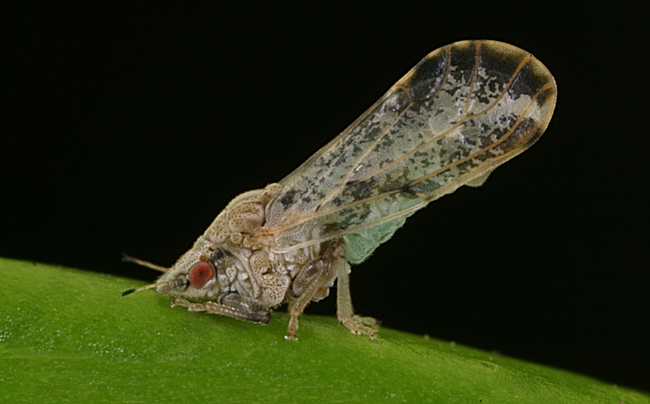
An adult Asian citrus psyllid. (Photo by M. Rogers)
What’s attacking your landscape? Read all about it in the newly released book from UC ANR
What do Asian citrus psyllids, Bagrada bugs, brown marmorated stink bugs, palm weevils, and polyphagous shothole borers have in common? Not only are they invasive pests relatively new to California, but they have also been added to the newly revised ANR publication, Pests of Landscape Trees and Shrubs.
Now in its third edition, this integrated pest management (IPM) how-to guide is a comprehensive resource for arborists, home gardeners, landscapers, parks and ground managers, and retail nurseries. It contains solutions for hundreds of insects, mites, nematodes, plant disorders and diseases, and weeds that can damage California landscapes.
Dozens of pests new to this edition include those affecting azaleas, camellias, camphor, eucalyptus, hibiscus, liquidambar, maples, oaks, olive, palms, pines, roses and sycamores.
A very important part of pest management is designing a pest-tolerant landscape, choosing the right plants for the location, and maintaining the landscape with appropriate irrigation, fertilizer, and other cultural practices to keep plants healthy.
These practices are featured along with information on how to:
- prevent pest problems and plant damage
- monitor for pests efficiently
- conserve natural enemies to provide biological control, and
- selectively use pesticides in ways that minimize adverse impacts
Presenting the practical experience and research-based advice of more than 100 University of California experts and landscape professionals, this 437-page book includes more than 600 high-quality color photographs and line drawings to help you recognize important pests and key natural enemies, causes and symptoms of plant damage, and pest biology and control techniques.
Problem-Solving Tables include the specific pests for each of over 200 genera of trees and shrubs, referring to the pages with their photographs and management solutions.
Pests of Landscape Trees and Shrubs: An Integrated Pest Management Guide, Third Edition, can be ordered through the ANR catalog. For more information, see the UC IPM website.


